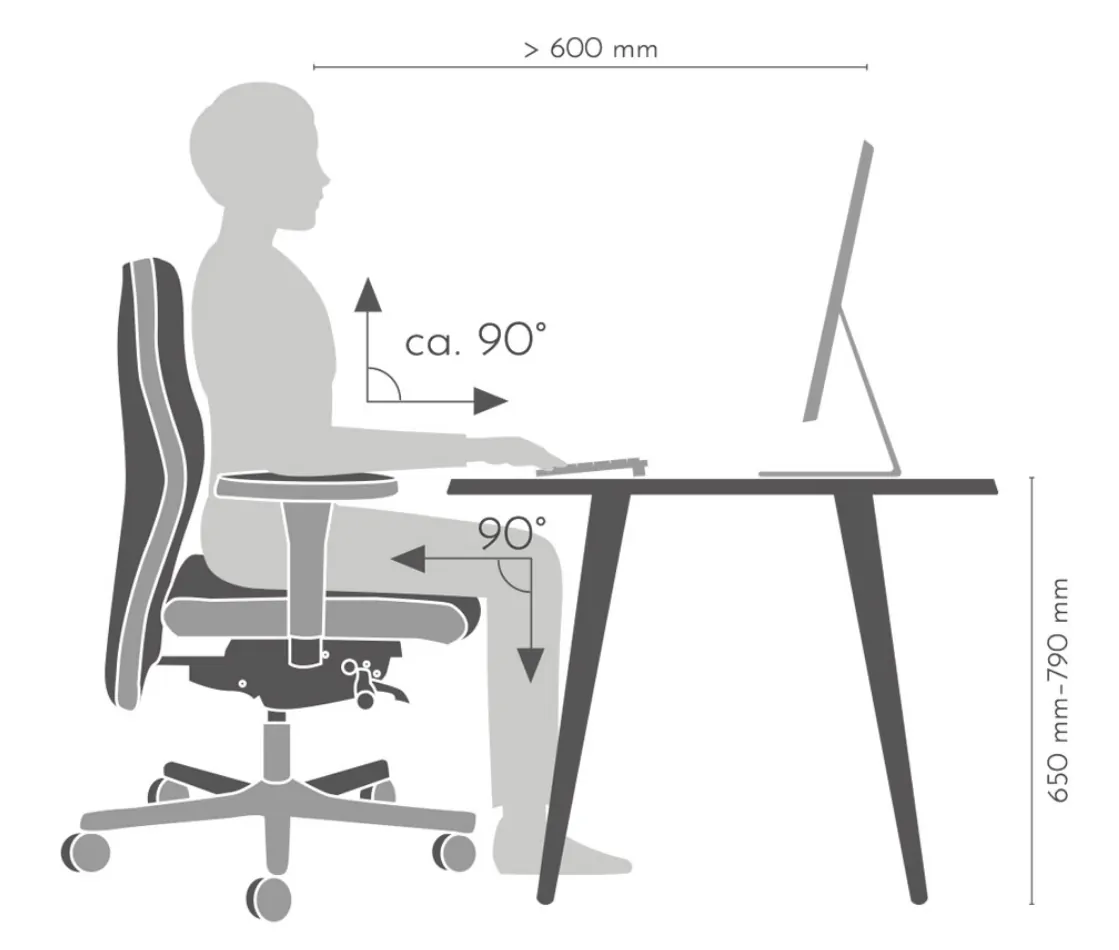

Ofinto Cloud review: floating on clouds

Ofinto wants me to «take off into new spheres of seating comfort». Sure, it’s marketing blab at its best. Nevertheless, the cushioning and suspension package really impressed me when I tried it.
You don’t have a choice in the office. The office chair you get is the one you’ll use. When working from home, you can decide what you want to sit on. If you can afford it, you might swear by models from Herman Miller (not in our range) or Hag (in our range). But I’m somewhere between the two, and have already tested a few chairs (here, here and here).
Today, it’s time to assess the Cloud from Swiss brand Ofinto. It’s their premium model, and arrives as a test sample with headrest and armrests. The technology in the chair is what I’d expect in this price range:
- A synchronised mechanism with dynamic backrest
- Adjustable seat height (46 to 56 cm) and depth (45 to 50 cm)
- Lumbar support (height-adjustable)
- Adjustable armrests
- Can take up to 130 kilograms
Assembly
The instructions are clearly structured and easy to understand. All illustrated parts are clearly labelled. In addition to the individual steps, there are short textual explanations. Take note, this is what a great manual should look like. (A video is currently being completed and should be available soon, according to Ofinto). This way, the whole thing is assembled in less than ten minutes. One of the reasons for this is that I only have to add a total of eight screws, and the appropriate Allen keys are included in the box.
First impressions
The Cloud is stable, weighing in at 17 kilogrammes. In theory, I could still put on some winter fat, since the Cloud is designed to handle someone up to 130 kilogrammes. Thanks to the soft castors, I’m not worried about damaging the parquet – the chair rolls quietly into place. However, I still use a protective mat to protect my wooden floor.
Before studying the various adjustment options, I try out the seat for the first time. I immediately realise why the chair is called Cloud. When you sit down, the upholstered seat gives a little and springs back very gently. The feeling reminds me of the one time I got to fly business class in a brand new Airbus. The fact that Ofinto uses a class 4 gas spring, the second-best class, also contributes to the cloud-like feel. It moves up to ten centimetres. Accordingly, I can vary the seat height between 46 and 56 centimetres. Being over 1.90 metres tall, I immediately choose the highest level. If you want to go even higher, Ofinto also offers an XL gas spring (currently only on their website).
Setting options
I intuitively found the right lever for seat height to the right, under the seat. To vary the seat depth and resistance of the backrest, I refer to the instructions. As with assembly, the same applies here: the drawings and labels are clear, and I was able to adjust the chair to suit me in no time at all. All controls are well placed and attached flush to the metal chassis. Nothing wobbles or rattles here.
I’m particularly impressed by the seat depth. Most chairs usually don’t have enough of a support surface for my relatively long thighs. The seat depth of the Cloud ranges from 45 to 50 centimetres. This is achieved by moving the seat – I shift my weight and pull the lever at the same time. I can adjust it perfectly for my leg length. There’s even some space for people with (even) longer legs.
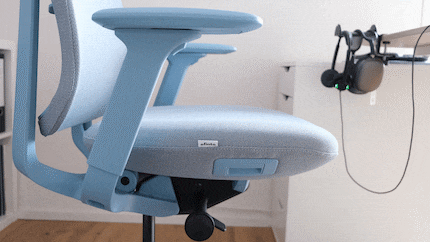
Source: Martin Jungfer
With the Cloud, I can choose how much the backrest yields when I lean back. At the lowest setting, it gives way so easily and quickly that I’m afraid I’ll smash into the floor. I opt for the hardest setting. Now the back provides the right amount of resistance when I lean against it. If the springiness bothers me too much, I can also lock the backrest.
The backrest isn’t height-adjustable, but the integrated lumbar support is. I push it into the right position. It presses lightly against my spine from behind at belt height and supports the S-shape of my spine. A foam pad is mounted on the support. It’s nice, since I don’t feel anything hard through the elastic linen fabric in the mesh back, but rather the small cushion.
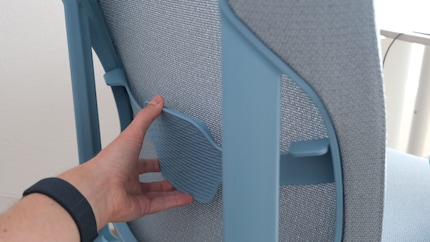
Source: Martin Jungfer
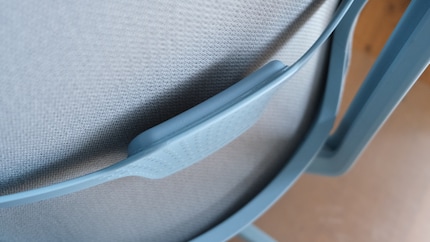
Source: Martin Jungfer
Weak points: headrest and armrests
For that executive chair feeling, the Cloud comes with armrests and a headrest as upgrades. To me, armrests are a must for an office chair. The fact that they can be adjusted in three ways on the Cloud is impressive. To change the height, I press the button under the armrest and pull or push it up or down. If I want to move the armrest closer to the desk, all I have to do is press against it. I can also easily push it closer to me or further away to the side. It’s very easy – too easy for me. I keep accidentally moving the forearm support, sometimes even if I just lean on it briefly.

Source: Martin Jungfer
I fasten the headrest to the top of the backrest with two screws – then remove it again. It’s simply too low down for me. When I sit upright at just over 1.90 metres tall, my shoulder blades touch the headrest. People with a smaller upper body than me, on the other hand, will find the headrest a pleasant extra. Since it can be adjusted in height and angle, you can lay your head down and relieve the strain on your neck muscles.
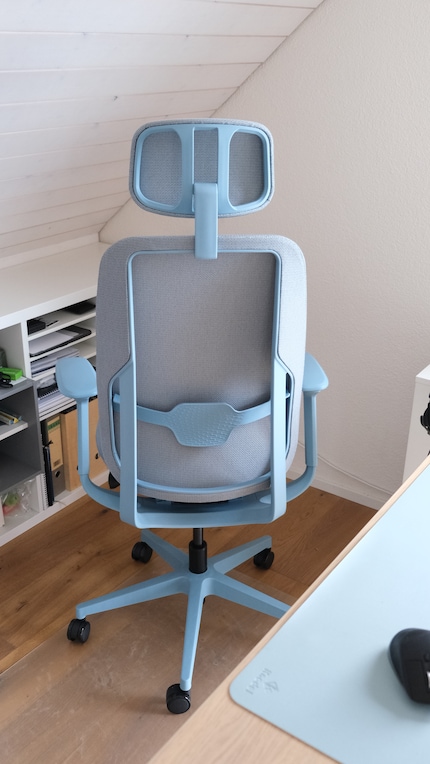
Source: Martin Jungfer
In a nutshell
Soft seating with a bit of room to grow
Pro
- Comfortable lumbar support
- 10-year warranty
- Easy to operate
- Well-manufactured
- Wonderfully comfortable seat
Contra
- Armrests move too much in two directions
- Headrest positioned too low for taller people
- Backrest not height-adjustable



Journalist since 1997. Stopovers in Franconia (or the Franken region), Lake Constance, Obwalden, Nidwalden and Zurich. Father since 2014. Expert in editorial organisation and motivation. Focus on sustainability, home office tools, beautiful things for the home, creative toys and sports equipment.
